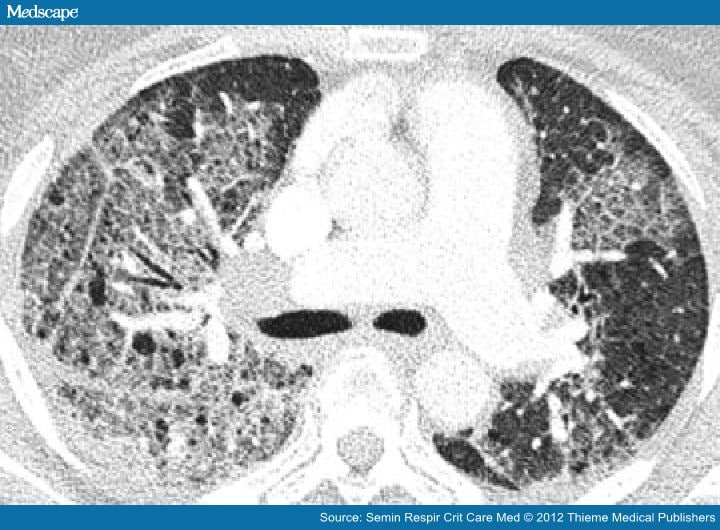| First Author (Year) |
Number of Patients |
Causes of DAD That Were Excluded in the Study |
Outcome |
| Katzenstein (1986)12 |
8 |
Not specified |
6 of 8 died; 2 survived to discharge (one died at 6 months) |
| Olson (1990)9 |
29 |
Collagen vascular disease (rheumatoid arthritis, SLE, scleroderma), severe hypotensive episode, infection, COPD, radiation, nitrofurantoin, cyclophosphamide, bleomycin, Wegener granulomatosis, asbestos exposure, hairy cell leukemia |
17 of 29 died; 12 survived, some for up to 2 years; no histological features could discriminate survivors from nonsurvivors |
| Primack (1993)20 |
9 |
Infections, including viral Cases with underlying UIP/IPF and SLE were not excluded |
8 of 9 died within 3 months of presentation |
| Ichikado (1997)21 |
14 |
Not specified |
All patients died within 2 weeks to 6 months |
| Johkoh (1999)22 |
36 |
Not specified |
Not available |
| Vourlekis (2000)23 |
13 |
Infections, cancer chemotherapy, collagen vascular diseases, AIDS, organ transplant, SIRS, toxic exposures |
12 of 13 required mechanical ventilation; 4 died in hospital; 8 survived (hospital survival: 67%) |
| Quefatieh (2003)24 |
8 |
Dermatomyositis, infectious pneumonia/sepsis, cocaine, carmustine |
7 of 8 survived to hospital discharge |
| Rice (2003)25 |
6 |
Dermatomyositis, rheumatoid arthritis, Still disease, SLE |
All patients died (this was an autopsy series) |
| Bonaccorsi (2003)26 |
4 |
Infection, collagen vascular disease |
3 of 4 died between 7 and 38 days |
| Suh (2006)27 |
10 |
Infections, drugs, collagen vascular diseases, acute exacerbation of IPF |
8 of 10 survived to hospital discharge; survivors were followed from 12 to 78 months; most were asymptomatic on follow-up |
| Parambil (2007)28 |
12 |
Infections, noninfectious complications of transplantation, acute exacerbation of IPF, connective tissue diseases (rheumatoid arthritis, polymyositis/dermatomyositis, diffuse systemic sclerosis, mixed connective tissue disease), drugs, radiation |
6 of 12 died (50% hospital mortality) |
| Avnon (2009)29 |
9 |
Cardiac disease, infections, autoimmune disease, malignancy |
All patients died within 5–26 days of admission to intensive care unit (100% mortality) |











